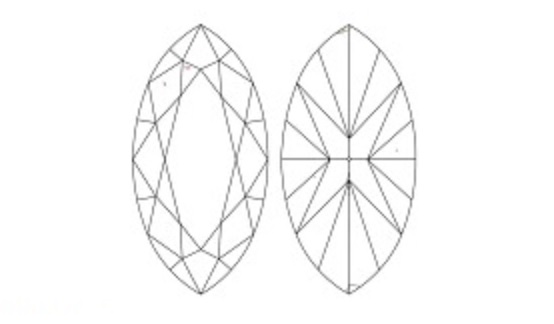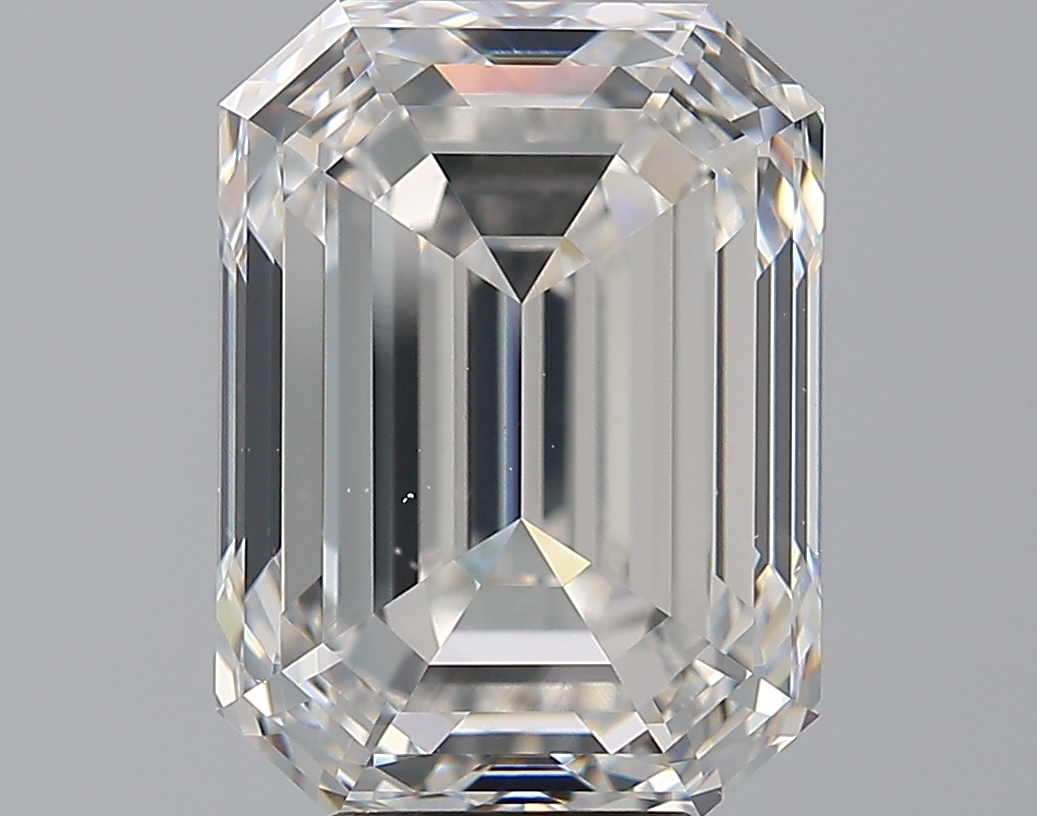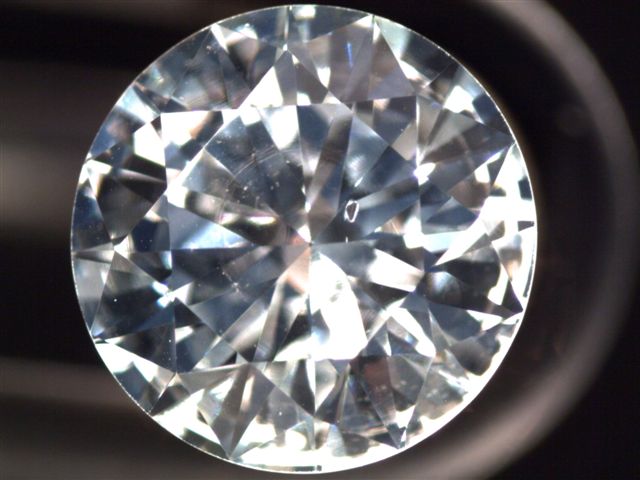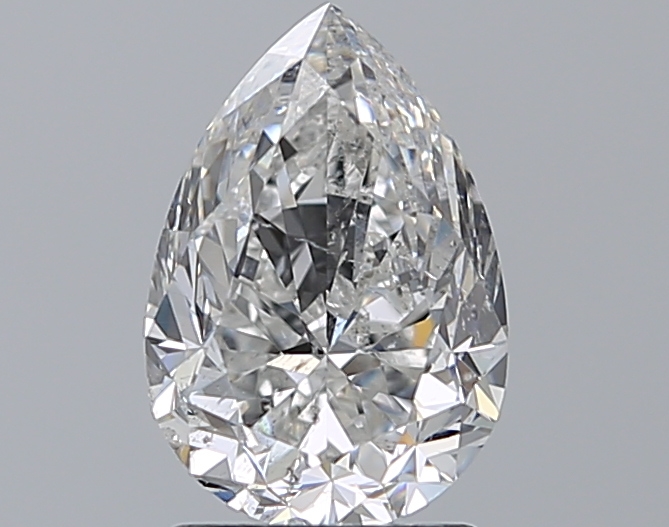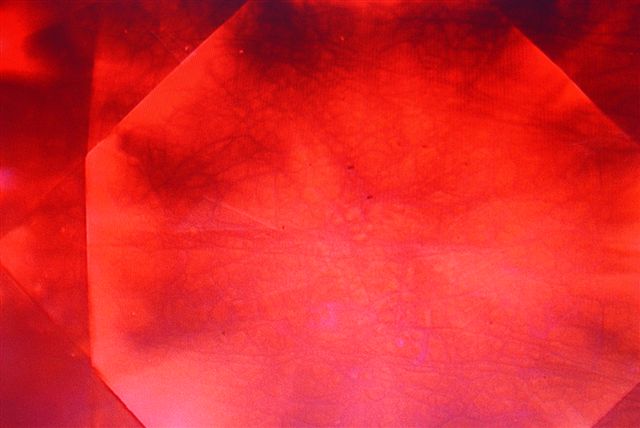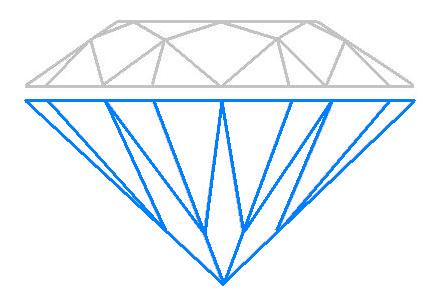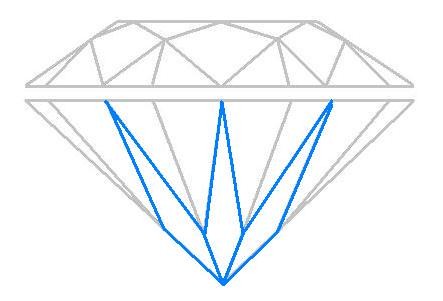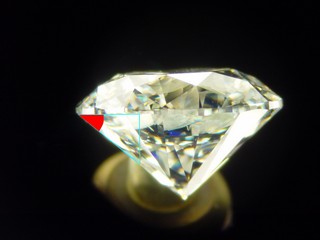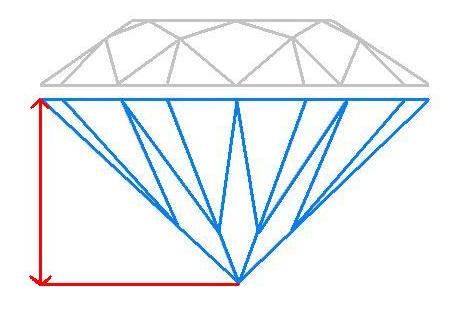The pavilion depth refers to the vertical distance from the girdle (the widest part of the diamond) to the culet (the point at the bottom of the diamond). This dimension plays a crucial role in a diamond’s light performance, brilliance, and overall appearance. The pavilion depth is an essential component of the diamond’s cut proportions, and its proper measurement ensures the stone’s aesthetic appeal and value.
What is Pavilion Depth?
Pavilion Depth is the distance between the girdle (the widest part of the diamond) and the culet (the tip or point at the bottom of the diamond). This measurement can be expressed either in millimeters or as a percentage of the diamond’s total depth (the measurement from the table to the culet).
In the context of diamond cutting, the pavilion depth is a critical parameter because it directly affects how the diamond handles light. If the pavilion depth is improperly proportioned, it can impact the diamond’s brilliance, fire, and overall symmetry.
How Pavilion Depth Affects a Diamond’s Appearance
1. Light Reflection and Brilliance
The pavilion depth plays a key role in how light is reflected inside the diamond. When light enters the diamond from the top (through the table), it is refracted through the crown (the upper portion) and the pavilion before exiting through the top facets.
If the pavilion depth is too shallow, light will pass through the bottom of the diamond without being adequately reflected, resulting in loss of brilliance.
Conversely, if the pavilion depth is too deep, light may reflect too much inside the diamond, and some light may get lost through the sides, reducing the overall brilliance and causing the diamond to appear dark or dull.
2. Fire and Dispersion
The pavilion depth also influences the fire or dispersion of the diamond, which is the ability to break white light into rainbow flashes. A well-proportioned pavilion depth enhances the diamond’s fire, creating colorful flashes of light as the diamond moves.
A shallow pavilion may not allow the diamond to display its full fire potential, and a deep pavilion may cause excessive dispersion, creating a less refined or washed-out appearance.
3. Diamond Proportions and Symmetry
Proper pavilion depth is essential for achieving a well-proportioned diamond. A diamond with balanced proportions will have optimal symmetry, contributing to uniform brilliance and a more aesthetic appearance.
Diamonds with incorrect pavilion depths (either too shallow or too deep) can have imbalanced proportions, leading to uneven sparkle and a less desirable appearance.
Ideal Pavilion Depth for Diamonds
The ideal pavilion depth depends on the shape of the diamond and the overall proportions of the stone. For round brilliant cut diamonds, the pavilion depth is typically measured as a percentage of the total depth (the overall measurement from the table to the culet).
1. Round Brilliant Cut Diamonds
For round brilliant diamonds, the ideal pavilion depth typically falls between 43% and 44% of the total depth of the diamond.
This range ensures the diamond will have the best balance of brilliance and fire, as the pavilion depth will optimize the light reflection and dispersion.
If the pavilion depth is below 43%, the diamond may appear shallow and lack brilliance. If it is above 44%, the diamond may appear too dark or lacking in sparkle.
2. Fancy Shape Diamonds (e.g., Cushion, Princess, Oval)
For diamonds with fancy shapes, the pavilion depth may vary depending on the shape and the overall proportions of the diamond. However, like round diamonds, a well-balanced pavilion depth is essential for optimal light performance.
In general, the ideal pavilion depth for fancy shapes should allow for proper light reflection and brilliance, with variations in pavilion depth based on the individual shape’s design and facet arrangement.
How to Measure Pavilion Depth
1. Using GIA and DCLA Grading Reports
Reputable gemological laboratories like the Gemological Institute of America (GIA) and the Diamond Certification Laboratory of Australia (DCLA) provide detailed cut grades and proportions for diamonds, including the pavilion depth.
The pavilion depth is measured as part of the overall cut proportions and is typically presented as a percentage of the total depth of the diamond. This ensures that buyers are informed about the diamond’s light performance potential.
2. Manual Measurement
A gemologist can manually measure the pavilion depth using precise tools such as a microscope or calipers. However, this measurement is typically included in certified reports from grading organizations like GIA or DCLA, ensuring accuracy and consistency.
Effects of Incorrect Pavilion Depth
1. Too Shallow Pavilion Depth
If the pavilion depth is too shallow (less than 43% for round brilliant diamonds), light will not reflect properly inside the diamond, leading to a loss of brilliance and an overall dull appearance.
Shallow pavilion depths can make the diamond look larger than it actually is, but at the cost of visual performance. The diamond may lack the characteristic sparkle and fire that makes diamonds so captivating.
2. Too Deep Pavilion Depth
If the pavilion depth is too deep (above 44% for round brilliant diamonds), light will be reflected too much inside the diamond and may be lost through the sides. This can lead to a dark appearance and a reduction in the diamond’s brilliance.
Deep pavilion depths can also distort the diamond’s overall proportions, making it appear smaller or less vibrant than it actually is.
Pavilion Depth and Diamond Value
The pavilion depth is a critical factor that influences the cut grade, and therefore, the value of the diamond. Diamonds with properly proportioned pavilion depths tend to have higher brilliance and fire, which makes them more desirable and valuable in the market.
1. Influence on Cut Quality
The cut grade is one of the most important factors in determining a diamond’s overall value. A well-proportioned pavilion depth will result in a higher cut grade, which typically translates to a higher price for the diamond.
Diamonds with poorly proportioned pavilions (either too shallow or too deep) will have a lower cut grade, leading to a decrease in value.
2. Impact on Aesthetic Appeal
Diamonds with properly proportioned pavilion depths have uniform brilliance, sparkle, and fire, making them more visually appealing. As a result, they tend to be more valuable to buyers looking for a high-quality diamond.
The pavilion depth is a critical component of a diamond’s cut proportions and significantly impacts the diamond’s brilliance, fire, and overall visual appeal. The ideal pavilion depth ensures that light is efficiently reflected and refracted within the diamond, maximizing its sparkle and colorful dispersion. Diamonds with properly proportioned pavilion depths tend to be more brilliant, aesthetically pleasing, and valuable. When evaluating a diamond, paying attention to the pavilion depth, along with other key factors like pavilion angle and symmetry, is essential for selecting a high-quality diamond with optimal light performance and beauty.
